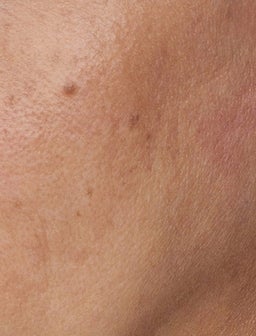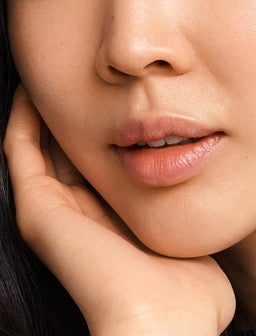Discover the confidence that comes with a beautifully even
and radiant complexion.

Skin Concerns
Uneven Skin Tone

What is uneven skin tone?
Skin tone is the natural color and appearance of your skin, and it’s influenced by a variety of factors including genetics, lifestyle and the environment. An uneven skin tone doesn’t typically indicate a medical concern but can be a source of frustration and insecurity.
Covering a broad range of challenges including dark spots, melasma, redness and hyperpigmentation, addressing an uneven skin tone can lead to a more harmonious, glowing look.
An uneven skin tone typically appears on the face, though sometimes, other parts of the body can be affected.1
Patients who saw facial improvements for up to 12 months after treatment2
Patients whose skin had a brighter tone after treatment in the hands3
Achieve your perfect skin tone

Restylane® SKINBOOSTERS™
Trusted* with over 18 years of clinical use and experience, Restylane® SKINBOOSTERS™ is clinically proven to boost skin quality for smooth, even, younger-looking, glowing skin.2-12


Complementary treatments
for uneven skin tone
Chemical peels and lasers
To improve uneven skin tone, Restylane® SKINBOOSTERS™ can be complemented with chemical peels and lasers to optimize the result. However, they should be approached with caution. Before pursuing treatment, consult an expert who understands these methods.
Creams and lotions
Creams or lotions can greatly complement Restylane® SKINBOOSTERS™ treatment for additional improvements to an uneven skin tone. However, always consult a dermatologist or skin therapist for the right cream for you.

1. Doolan et al. AJGP Vol. 50, No. 12, December 2021. 2. Gubanova EI et al. Poster presented at IMCAS, Jan–Feb 2015, Paris, France. 3. Wu Y et al. J Cosmet Dermatol. 2020;19(7):1627–1635. 4. Willkerson EC, Goldberg DJ. Dermatol Surg. 2018;44(1):68–74. 5. Streker M et al. J Drugs Dermatol. 2013;12(9):990–994. 6. Gubanova EI et al. Aesthetic Med. 2010;1:94–98. 7. Wu Y et al. J Cosmet Dermatol. 2020;19(7):1627–1635. 8. Dierickx C et al. Dermatol Surg. 2018;44 Suppl 1:S10–S18. 9. Lee BM et al. Arch Plast Surg. 2015;42(3):282–287. 10. Gubanova EI et al. J Drugs Dermatol. 2015;14(3):288–299. 11. Belmontesi M et al. J Drugs Dermatol. 2018;17(1):83–88. 12. RESTYLANE VITAL approved in Europe. Available at: https://globenewswire.com/en/news-release/2004/05/27/311074/1036/en/RESTYLANE-VITAL-approved-in-Europe.html (accessed December 2022). 13. Data on File. MA-39929. Global 8 million treatments 2022.
*Restylane® SKINBOOSTERS™ VITAL obtained first CE certification in Europe in 2004.12
Always consult a healthcare professional for individualized treatment recommendations and to discuss important safety information and risks associated with the use of the products.




